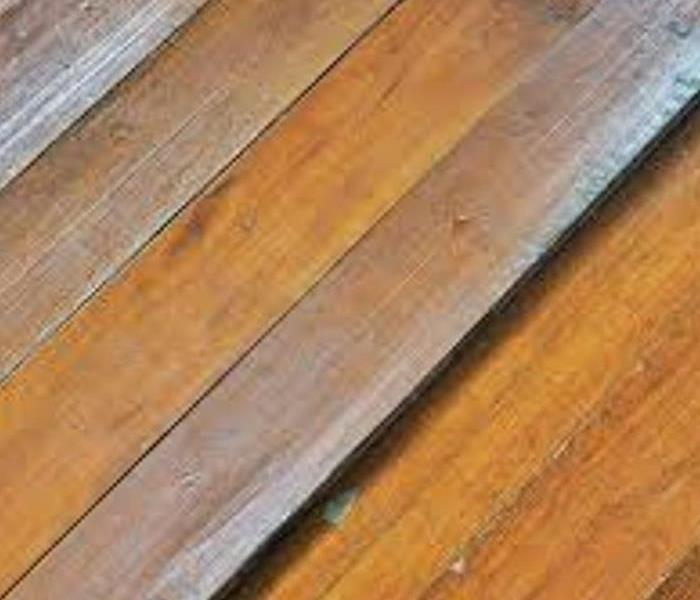Hardwood Floor Water Damage Problems
3/22/2021 (Permalink)
It’s obvious that the longer a hardwood floor stays wet, the less chance it has at being saved, and the higher the chance that the floorboards will cup or warp even after proper drying. Some of the most common problems with hardwood floor water damage are:
- Cupping: Cupping occurs when the sides of the flooring are higher than the center of the boards. This usually produces a concave shape. Both solid and engineered (made up of different woods) can cup when exposed to water damage. Hardwood floor cupping is usually a result of a change in the moisture content levels of the wood flooring. In many cases, you can reverse hardwood floor water damage with the use of a professional.
- Warping: Warping is similar to cupping but is much more severe. This usually involves the floor buckling or even popping off the subfloor. This needs to be taken out immediately to prevent further damage. Warping is usually a result of humidity fluctuations and can impact all types of wood, whether brand new or old. Unfortunately, water does not have to be present to cause warped hardwood floors. Water vapors being present in the area surrounding the hardwood can warp your floors. It can also be from environmental influences like quick humidity changes in the weather. Warping is most noticeable in the summer, where hardwood floors will expand with the humidity and sometimes buckle up. Fortunately, professional hardwood floor drying equipment can prevent warping if caught early.
- Mold: If hardwood floor water damage is not taken care of immediately, mold growth may occur. This usually happens due to pieces of paper that are normally installed directly underneath the floor during installation to prevent squeaking. Hardwood floor water damage can produce mold spores on furniture, clothing, and other areas of the house if not taken care of right away. If your floor has been wet for an extended amount of time without care, there is a chance that your floor is permanently damaged.





 24/7 Emergency Service
24/7 Emergency Service
